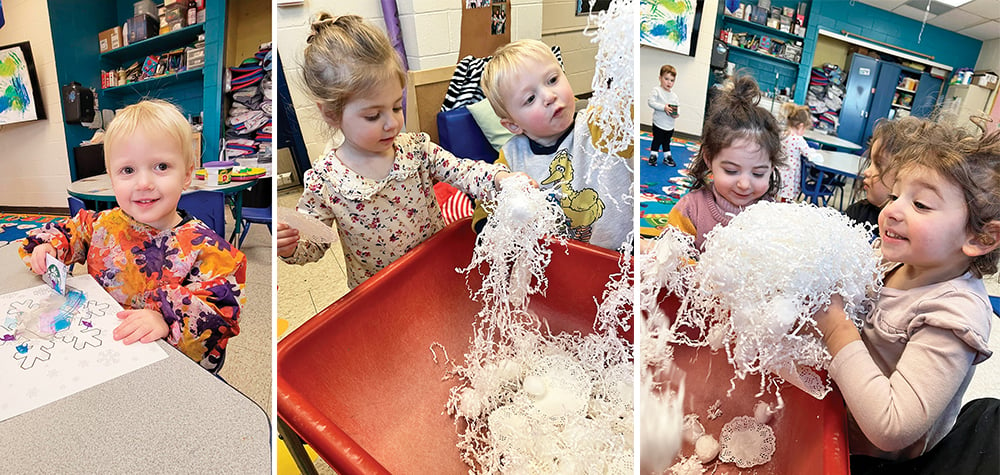



As boredom set in during quarantine, many who normally shied away from the kitchen took unprecedented steps in the general direction of their fridge. Although many had only opened the fridge to check whether the contents within had changed in the past six seconds since they’d last checked, others took leaps of faith and decided to put their cooking skills to the test. Here is a list of recipes different community members have experimented with that they are eager to share.
When Teach NJ’s free kosher lunch program began many families found themselves with an excessive amount of milk. As opposed to simply freezing for future use, Miriam Rosenfeld of Bergenfield, chose to turn her milk into yogurt. She followed a homemade yogurt recipe from tasteofhome.com.
Start to finish: 25 minutes
Servings: makes about 2 quarts
Ingredients:
2 quarts pasteurized whole milk
2 tablespoons plain yogurt with live active cultures
Directions:
1) In a Dutch oven, heat milk over medium heat until a thermometer reads 200 F, stirring occasionally to prevent scorching. Remove from heat. Let stand until a thermometer reads 112 F to115 F, stirring occasionally. (If desired, place pan in an ice-water bath for faster cooling.)
2) Whisk 1 cup warm milk into yogurt until smooth. Return all to pan, stirring gently. Transfer mixture to warm, clean jars, such as 1-quart canning jars.
3) Cover jars. Place in oven. Turn on oven light to keep mixture warm, at about 110 F. Let stand, undisturbed, 6-24 hours or until yogurt is set, tilting jars gently to check. (Yogurt will become thicker and more tangy as it stands.)
4) Refrigerate, covered, until cold. Store in the refrigerator up to 2 weeks.
Now that the yogurt’s ready, you can make a refreshing parfait. Nava Forman, of Teaneck, created her own easy-to-make parfait recipe. While she normally stays away from the kitchen, Forman used her time in quarantine to conquer her fears and start experimenting. Forman personally likes to prepare her parfait in a glass so that all the layers are visible.
Start to finish: 5 minutes
Servings: makes about 15 ounces
Ingredients:
Fistful of fresh blueberries
5 tablespoons yogurt
3 tablespoons of honey or plain granola
Fistful of strawberries
Whipped cream and cinnamon to taste
Directions:
1) Rinse a fistful of fresh blueberries and drop into the jar.
2) Take three tablespoons of vanilla yogurt and place the yogurt on top of the blueberries.
3) Layer about three tablespoons of honey or plain granola on top.
4) Add a layer of 2 tablespoons of yogurt.
5) Rinse off fresh strawberries and place them on top.
6) Top it off with whipped cream and cinnamon for a nice finishing touch.
Rosenfeld also made cheese from all of the excess Teach NJ milk. She used a no-rennet no-fret cottage cheese recipe from macheesmo.com. Pair with fruit or toast for a filling breakfast.
Start to finish: 45 minutes
Servings: 2-3 cups
Ingredients:
½ gallon 2% milk
½ cup white vinegar
½ cup half-and-half
Kosher salt (to taste)
Directions:
1) Pour the milk into a medium-large saucepan. Bring to 120 degrees. Stir continuously.
2) Take it off the heat and stir in vinegar. It should start to separate.
3) Once everything is stirred together, put on the lid and let it sit for 30 minutes. This gives the curds plenty of time to cool a bit and firm up.
4) Pour curds through a colander lined with cheesecloth or a fine clean towel. Gather up the corners of the towel and press the whey out lightly.
5) Turn on the cold water and start rinsing off the curds. Keep the towel wrapped tightly around the curd but slowly roll it around. This will wash off the vinegar, break up the curds and cool it off. Spend a few minutes on this.
6) Now put curds in a bowl and add half-and-half. Stir well, making sure curds are broken apart. Taste before adding salt if necessary.
This recipe is similar to Rosenfeld’s cottage cheese recipe. She curdled the milk with lemon juice (you can also use vinegar), strained it and added salt to taste. Then she pressed all of the liquid out through a cheesecloth. This recipe was found originally on tavolamediterreanea.com and was written by Farrell Monaco. Enjoy as a savory addition to a salad or sandwich.
Start to finish: 1 hour 30 minutes
Servings: makes about 400 grams
Ingredients:
2 liters whole milk
2 teaspoons salt
2 lemons
Directions:
1) Boil the milk on high while whisking until the milk flares up.
2) Once the milk froths, turn off heat and squeeze juice of the lemons into the pot.
3) Stir and leave the milk to stand for 15 minutes until the milk curdles and whey separates.
4) Line a sieve with cheesecloth and pour the curds into it, straining the whey.
5) Leave the curds to stand for 1 hour.
6) Once most of the whey has drained, tie the cheesecloth tight around the curds and give it a light squeeze to get rid of any excess whey.
7) Use a metal clip or tie a strong knot with the edges of the cloth snug around the curds to prepare it for boiling. (Cool and keep the whey on the side to use as brine when refrigerating the finished cheese.)
8) Heat a pot of boiling water with enough water to cover the cheese. Add salt. Once it boils, reduce to low flame (light rolling boil).
9) Drop the tied cheese and let simmer for 1 hour, turning it over at the half-hour mark.
10) Remove tied cheese and leave to cool in a sieve.
11) Cut or untie the cheesecloth and place the cheese in a bowl.
12) Let cool until room temperature and place in refrigerator overnight. It should be firm to the touch in the morning.
�













